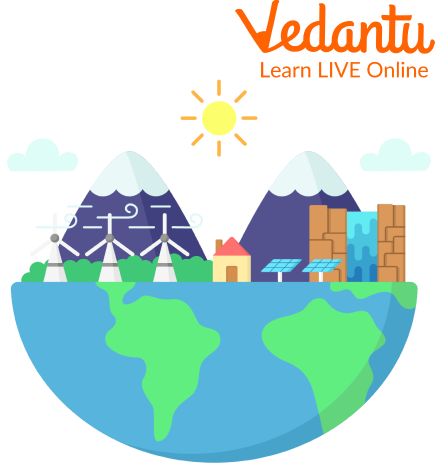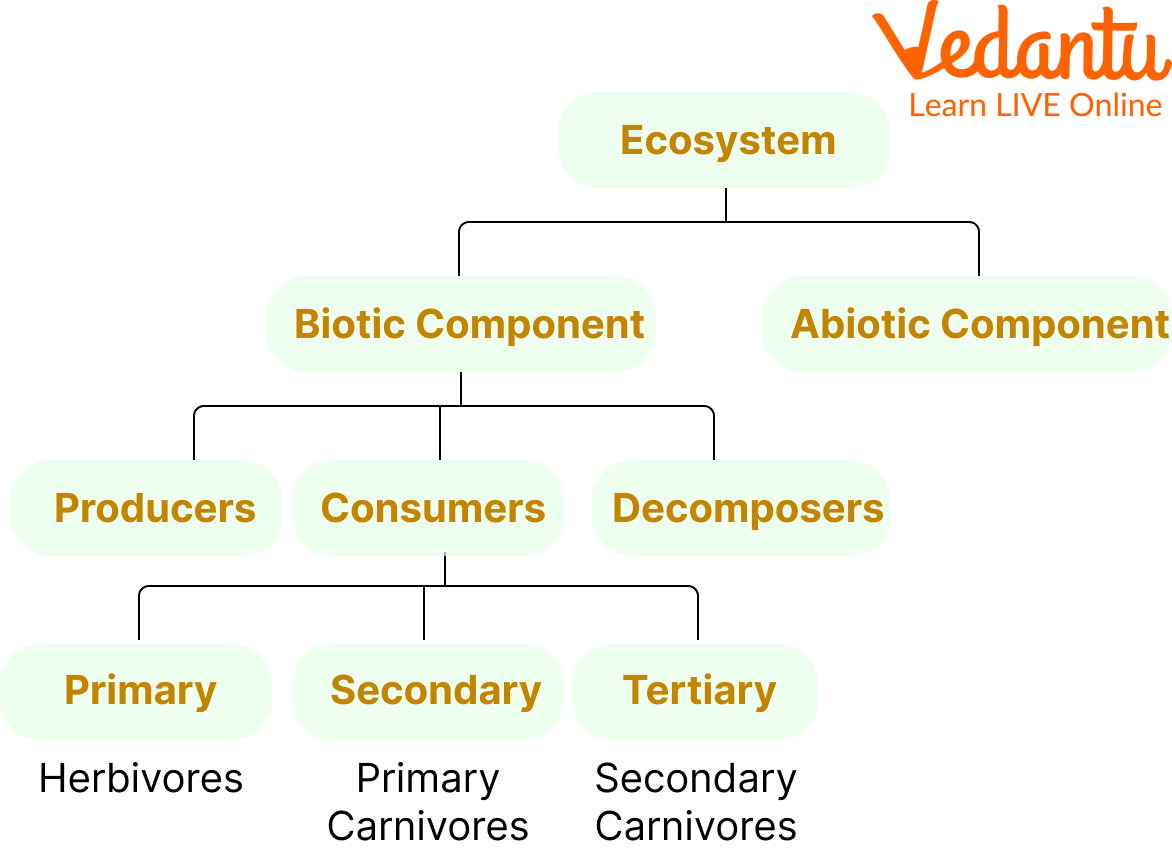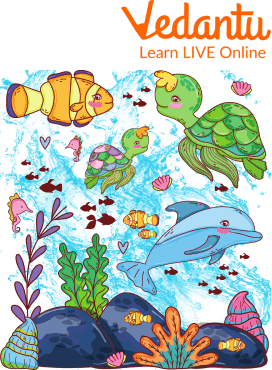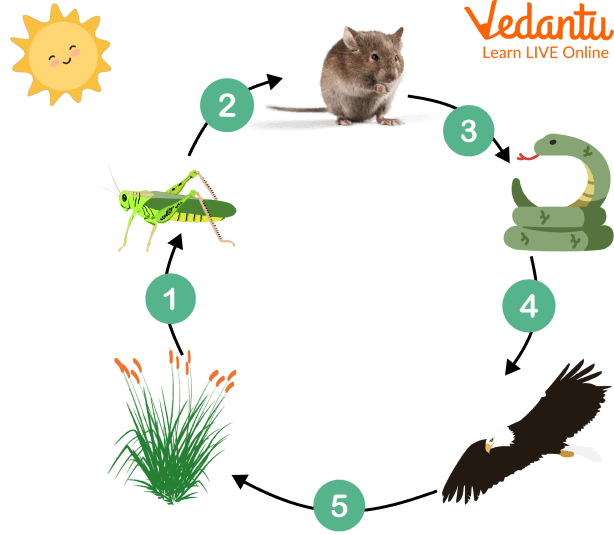




Learning More about Our Ecosystem
An ecosystem is formed by the interactions of all living species with each other and with the physical and chemical aspects of their environment, linked by the flow of energy. It consists of all of the living things in a particular area, as well as their nonliving surroundings like air, water, and sunlight. Humans rely on ecosystems for basic needs. Ecosystems keep us alive by providing clean water and fresh food. They provide raw materials to satisfy our needs for clothing, shelter, transportation, and energy.

Ecosystem Diagram
What is an Ecosystem?
An ecosystem can be defined as the biological community of living beings, communicating with their environment and other non-living components. Every living thing, including man, is involved in these complex networks of interdependent relationships, which are called ecosystems.
Structure of the Ecosystem
The structure of an ecosystem is defined by the association of both biotic and abiotic components of the ecosystem. This encompasses the percentage of energy in our environment. The structure of an ecosystem can be divided into two main elements, namely: biotic and abiotic components. Let’s learn about these in detail.

Structure of Ecosystem
1. Biotic Components of the Ecosystem
Nutrition classifies biotic components as autotrophs, heterotrophs, or saprotrophs (or decomposers).
All autotrophs, such as plants, are producers. They are called autotrophs because they can create food through photosynthesis. As a result, all species higher up the food chain rely on producers for sustenance.
Saprophytes such as fungi and bacteria are decomposers. They feed directly on dead and decaying organic substances. Decomposers are important for the ecology because they recycle nutrients that plants can utilise.
Consumers, also known as heterotrophs, are organisms that rely on other organisms for sustenance. Consumers are further subdivided into primary, secondary, and tertiary consumers. As they rely on producers for food, primary consumers are always herbivores.
Primary consumers provide energy to secondary consumers. They can be carnivorous or omnivorous.
Tertiary consumers are creatures that get their sustenance from secondary consumers. Tertiary consumers can be either carnivorous or omnivorous.
Some food chains contain quaternary consumers. For energy, these organisms prey on tertiary consumers. Furthermore, they are frequently at the top of a food chain because they have no natural predators.
2. Abiotic Components of the Ecosystem
It consists of both basic inorganic (soil, water, oxygen, calcium carbonates, phosphates, and so on) and organic components. Physical elements such as moisture, wind currents, and solar radiation are also included. The sun's radiant energy is the only important energy source for any biosphere.
Types of Ecosystem
An ecosystem might be as little as a desert oasis or as large as an ocean stretching thousands of kilometres. Ecosystems are classified into two types:
1. Terrestrial Ecosystem
Terrestrial ecosystems are the type of ecosystems that are mostly found on land. Terrestrial ecosystems encompass around 140 to 150 million km sq. or approximately 25 to 30% of the entire earth's surface area.
There are several types of terrestrial ecosystems found in diverse geological zones. These are as follows:
Forest: A forest ecosystem is made up of various plants, notably trees, animals, and microorganisms that coexist with the abiotic components of the environment. Forests help to keep the earth's temperature stable and act as a primary carbon sink.
Grasslands: Grass and plants dominate the vegetation in a grassland habitat. Grassland environments include temperate grasslands and tropical or savanna grasslands.
Tundra: Tundra ecosystems are located in freezing climates or where rainfall is limited and are devoid of trees. For the majority of the year, these are covered in snow. Tundra ecosystems can be found in the Arctic or on mountain peaks.
Desert: Deserts can be found all over the planet. These are low-lying areas with little vegetation.

Terrestrial Ecosystem
2. Aquatic Ecosystem
Aquatic ecosystems are ecosystems that exist in bodies of water.
These are further classified into two types:
Freshwater Ecosystem: It is an aquatic ecosystem that includes lakes, ponds, rivers, streams and wetlands. These have no salt content in contrast with the marine ecosystem.
Marine Ecosystem: The marine ecosystem includes seas and oceans. These have a more substantial salt content and more extraordinary biodiversity in comparison to the freshwater ecosystem.

Aquatic Ecosystem
Energy Flow in the Ecosystem
One of the substantial variables that benefit the survival of various creatures is the energy flow in the ecosystem. Sun is the ultimate source of energy for all lives. This energy is used by plants in the process of photosynthesis, which is used to synthesise their food.
Light energy is transformed into chemical energy and transferred down through successive trophic levels during this biological process. The food chain refers to the transfer of energy from a producer to a consumer and finally, to an apex predator or a detritivore. Let us understand with the example of the food chain given below.

Food Chain
Step 1: The grasshopper eats the plants.
Step 2: The mouse eats the grasshopper.
Step 3: The snake eats the mouse.
Step 4: The eagle eats the snake.
Step 5: When the eagle dies, fungi break down the body and turn them into nutrients.
Summary
From this article on what is the ecosystem for class 7, we have learnt that an ecosystem is a community of living organisms and their physical environment. The term can be used to refer to different areas in the natural world, such as forests, grasslands, and coral reefs. There are two types of ecosystems: one is the terrestrial ecosystems that includes forest, grassland, desert, etc. The second type is an aquatic ecosystem that includes rivers, seas, ponds, etc.
Ecosystems are composed of both biotic (living)that include plants and animals, etc. and abiotic (non-living) components like soil, water, air, etc. which interact with one another to produce the unique characteristics of each ecosystem. The transfer of energy from one organism to the other is known as a food chain which produces energy flow in the ecosystem.
FAQs on Ecosystem
1. What is an ecosystem and what are its main components?
An ecosystem is a biological community where living organisms (biotic components) interact with each other and their non-living physical environment (abiotic components). These interactions create a self-sustaining system driven by energy flow and nutrient cycling. The main components are producers, consumers, decomposers, and the surrounding physical elements like soil, water, and climate.
2. What is the difference between the biotic and abiotic components of an ecosystem?
The key difference lies in whether they are living or non-living elements.
- Biotic components include all the living or once-living organisms in the ecosystem. These are grouped by their role in energy flow: producers (plants), consumers (animals), and decomposers (fungi, bacteria).
- Abiotic components are all the non-living chemical and physical factors in the environment. Examples include sunlight, temperature, water, soil composition, air, and minerals.
3. How does energy flow through an ecosystem via a food chain?
Energy flows in a unidirectional path through an ecosystem, typically starting from the sun. Producers, like plants, convert solar energy into chemical energy through photosynthesis. This energy is then transferred to primary consumers (herbivores) when they eat the plants, then to secondary consumers (carnivores/omnivores), and so on up the trophic levels. At each step, a significant amount of energy is lost as heat.
4. What is the difference between a food chain and a food web?
A food chain illustrates a single, linear pathway of energy transfer in an ecosystem (e.g., grass → grasshopper → frog → snake). In contrast, a food web is a more realistic and complex model that shows multiple interconnected food chains, representing the various feeding relationships and energy pathways within an entire ecological community.
5. What are the major types of ecosystems on Earth?
Ecosystems are broadly classified into two main types:
- Terrestrial Ecosystems: These are land-based and include forests, grasslands, deserts, and tundra. Each is defined by its dominant vegetation and climate.
- Aquatic Ecosystems: These are water-based and are further divided into freshwater ecosystems (lakes, rivers, ponds) and marine ecosystems (oceans, seas, estuaries), which have a high salt content.
6. What vital ecological services do ecosystems provide?
Ecosystems provide essential benefits to humans and the planet, known as ecological services. Key services include:
- Purification of air and water.
- Regulation of climate through carbon sequestration.
- Pollination of crops and natural vegetation.
- Nutrient cycling, which creates fertile soils.
- Providing habitats for biodiversity.
- Decomposition of waste products.
7. What is ecological succession, and how do primary and secondary succession differ?
Ecological succession is the gradual and predictable process of change in the species structure of an ecological community over time. The main difference between the two types is the starting condition. Primary succession occurs in a lifeless area where no soil exists, such as on bare rock after a volcanic eruption. In contrast, secondary succession happens in an area that previously supported life but has undergone a disturbance, like a fire or flood, which leaves the soil intact.
8. Why is the pyramid of energy always upright, unlike pyramids of biomass or number?
The pyramid of energy is always upright because energy transfer between trophic levels is highly inefficient. According to the 10% law of energy transfer, only about 10% of the energy from one trophic level is incorporated into the next. This means the energy available always decreases at each successive level, resulting in a broad base and a narrow top. Pyramids of biomass or number can be inverted, for example, when a single large tree (producer) supports thousands of insects (primary consumers).
9. What would happen to an ecosystem if decomposers disappeared?
If decomposers like bacteria and fungi disappeared, the ecosystem would collapse. Dead organic matter—including dead plants, animals, and waste products—would accumulate without breaking down. The crucial process of nutrient cycling would stop, meaning essential nutrients like nitrogen and phosphorus would not be returned to the soil. This would prevent producers (plants) from growing, ultimately leading to the starvation and collapse of all other trophic levels.
10. How does nutrient cycling, like the carbon cycle, maintain an ecosystem's health?
Nutrient cycling is the continuous movement of essential elements (like carbon, nitrogen, and phosphorus) from the non-living environment into living organisms and back again. For example, in the carbon cycle, plants absorb carbon dioxide for photosynthesis, consumers get carbon by eating plants, and decomposers release carbon back into the atmosphere and soil. This constant recycling ensures a steady supply of nutrients for producers, which forms the base of the entire food web, thereby sustaining the ecosystem's long-term productivity and stability.









